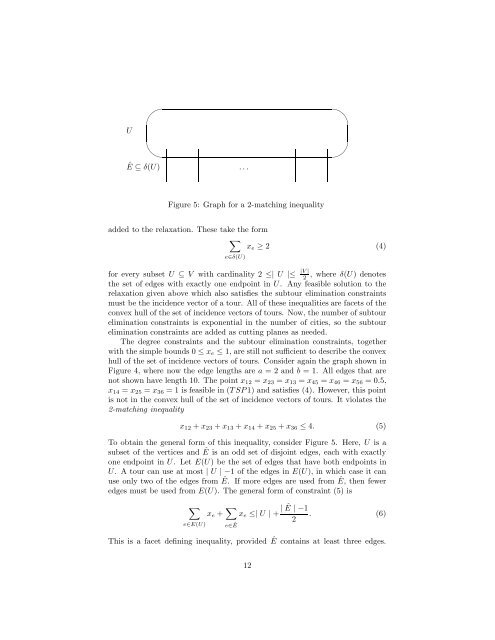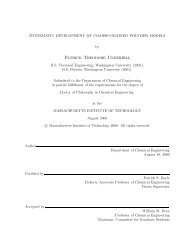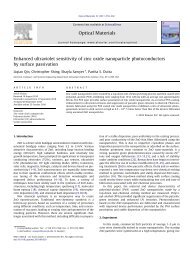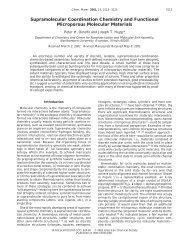Branch-and-Cut Algorithms for Combinatorial Optimization ...
Branch-and-Cut Algorithms for Combinatorial Optimization ...
Branch-and-Cut Algorithms for Combinatorial Optimization ...
Create successful ePaper yourself
Turn your PDF publications into a flip-book with our unique Google optimized e-Paper software.
U<br />
✬<br />
✫<br />
Ê ⊆ δ(U) ...<br />
Figure 5: Graph <strong>for</strong> a 2-matching inequality<br />
✩<br />
✪<br />
added to the relaxation. These take the <strong>for</strong>m<br />
<br />
xe ≥ 2 (4)<br />
e∈δ(U)<br />
<strong>for</strong> every subset U ⊆ V with cardinality 2 ≤| U |≤ 2 ,whereδ(U) denotes<br />
the set of edges with exactly one endpoint in U. Any feasible solution to the<br />
relaxation given above which also satisfies the subtour elimination constraints<br />
must be the incidence vector of a tour. All of these inequalities are facets of the<br />
convex hull of the set of incidence vectors of tours. Now, the number of subtour<br />
elimination constraints is exponential in the number of cities, so the subtour<br />
elimination constraints are added as cutting planes as needed.<br />
The degree constraints <strong>and</strong> the subtour elimination constraints, together<br />
with the simple bounds 0 ≤ xe ≤ 1, are still not sufficient to describe the convex<br />
hull of the set of incidence vectors of tours. Consider again the graph shown in<br />
Figure 4, where now the edge lengths are a =2<strong>and</strong>b =1. Alledgesthatare<br />
not shown have length 10. The point x12 = x23 = x13 = x45 = x46 = x56 =0.5,<br />
x14 = x25 = x36 = 1 is feasible in (TSP1) <strong>and</strong> satisfies (4). However, this point<br />
is not in the convex hull of the set of incidence vectors of tours. It violates the<br />
2-matching inequality<br />
x12 + x23 + x13 + x14 + x25 + x36 ≤ 4. (5)<br />
To obtain the general <strong>for</strong>m of this inequality, consider Figure 5. Here, U is a<br />
subset of the vertices <strong>and</strong> Ê is an odd set of disjoint edges, each with exactly<br />
one endpoint in U. Let E(U) be the set of edges that have both endpoints in<br />
U. A tour can use at most | U |−1oftheedgesinE(U), in which case it can<br />
use only two of the edges from Ê. If more edges are used from Ê, then fewer<br />
edges must be used from E(U). The general <strong>for</strong>m of constraint (5) is<br />
<br />
e∈E(U)<br />
xe + <br />
| Ê |−1<br />
xe ≤| U | + . (6)<br />
2<br />
e∈Ê<br />
This is a facet defining inequality, provided Ê contains at least three edges.<br />
12<br />
|V |







